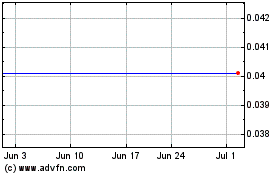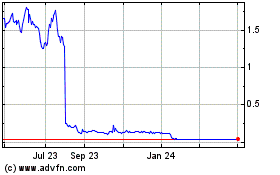Aravive, Inc. (Nasdaq: ARAV), a clinical-stage oncology
company developing transformative therapeutics, today announced the
successful completion of the Phase 1b trial of its AVB-500 drug
candidate in platinum resistant ovarian cancer (PROC) and selection
of the recommended Phase 2 dose (RP2D).
“Aravive is grateful to the patients and their physicians who
participated in this trial,” said Gail McIntyre, Ph.D., chief
executive officer at Aravive. “We are very encouraged by the
potential of AVB-500 to improve responses and progression free
survival in combination with chemotherapy in platinum resistant
ovarian cancer. The information we have obtained from the clinical
data together with some informal preliminary feedback from the FDA
have helped inform our Phase 2/3 trial strategy. We look forward to
formally discussing these results and our development plan with the
FDA by the end of 2020.”
Phase 1b ResultsThe safety of AVB-500 has been
studied in 84 subjects, including 31 healthy volunteers in a Phase
1a trial and 53 patients with PROC in a Phase 1b trial (40 in 10
mg/kg cohort, 6 in 15 mg/kg cohort, and 7 in 20 mg/kg cohort). The
primary objective of the PROC trial was to assess safety of AVB-500
in combination with paclitaxel (PAC) or pegylated liposomal
doxorubicin (PLD). Secondary endpoints included objective response
rate (ORR), CA-125 response, clinical benefit rate, progression
free survival (PFS), overall survival, pharmacokinetic (PK)
profile, GAS6 serum levels, and anti-drug antibody titers.
Safety Data: Analysis of all safety data to
date demonstrates that AVB-500 has been generally well-tolerated
with no dose-limiting toxicities or unexpected safety signals.
There have been no AVB-500-related SAEs reported to date. There
were two types of adverse events that were considered related to
AVB-500, as determined by an independent medical monitor: infusion
reactions and fatigue. A premedication regimen was designed and
implemented during the trial to manage potential infusion
reactions.
Pharmacokinetics: Prior data analysis of 31
patients from the 10 mg/kg cohort showed that blood trough levels
of AVB-500 demonstrated statistically significant correlation with
clinical activity, as patients who achieved minimal efficacious
concentration (MEC) >13.8 mg/L demonstrated a greater likelihood
of response and prolonged PFS. Updated modeling using actual data
from all enrolled patients demonstrated that 59%, 84%, and 93% of
patients achieved MEC at doses of 10 mg/kg, 15 mg/kg, and 20 mg/kg,
respectively. Furthermore, at 20 mg/kg, a large percentage of
subjects is projected to have trough levels greater than 4 times
the MEC. These data suggest that at 15 mg/kg, the pharmacokinetics
of AVB-500 start to plateau and support the choice of 15 mg/kg as
RP2D for AVB-500.
Preliminary Efficacy: While the Phase 1b trial
was a safety trial and not powered to demonstrate efficacy, the
investigator-assessed best response (RECIST V1.1) to AVB-500 across
all cohorts supports promising clinical activity:
10 mg/kg cohort, 37 out of 40 patients evaluable:
- 31% ORR (5/16) among those treated with AVB-500 in combination
with PAC, with 1 complete response (CR). Patients given AVB-500
plus PAC who achieved MEC of AVB-500 demonstrated improved ORR of
50% (4/8), with 1 CR.
- The PFS among those who achieved MEC of AVB-500 was 7.5 months
versus 2.28 months with those below MEC (p=0.0062).
- 21.6% ORR (8/37) in all evaluable patients, regardless of their
MEC or use of PAC or PLD.
- All responses have been confirmed.
15 mg/kg cohort, 5 out of 6 patients evaluable:
- All 5 patients in this cohort experienced clinical benefit,
with 1 CR (continuing to show CR 3 months after discontinuing
chemotherapy while on AVB-500 as single agent), 2 partial responses
(PR), and 2 stable disease (SD).
- All responses have been confirmed.
20 mg/kg cohort, 7 out of 7 patients evaluable:
- Of the 7 patients in this cohort, there was 1 PR (with CR of
target lesion; not confirmed), 1 SD, and 5 with progressive disease
(PD).
- A post-hoc analysis of tumor expression showed that 4 patients
whose best response was PD did not express GAS6 (3) and/or had low
amounts of AXL (2) on immunohistopathology of their tumors. While
they were enrolled per protocol in the Phase 1b trial, these
patients do not appear to be representative of the eventual AVB-500
target population, as they are mostly rare subtypes of PROC and
such patients based on their clinical characteristics will not be
eligible for the planned Phase 2/3 trial.
Other notable findings:
- AVB-500 plus PAC appeared to perform better than AVB-500 plus
PLD.
- Across all cohorts, AVB-500 plus PAC data show an ORR of 35%
(8/23, including 2 CRs) compared to ORR of 15% (4/26) in AVB-500
plus PLD.
- AVB-500 plus chemo appeared to perform better in patients
without previous exposure to bevacizumab.
- In a subgroup analysis of patients who had not been previously
exposed to bevacizumab in their prior lines of therapy, AVB-500
yielded an ORR of 60% (6/10 including 2 CR) when combined with PAC
and an ORR of 19% (3/16) when combined with PLD. For reference,
control arms of the third-party AURELIA Trial of bevacizumab
(NCT00976911) showed ORR of 30.2% (out of 55 patients total) with
PAC alone and 7.8% (out of 64 patients total) with PLD alone.
- Serum levels of soluble AXL (sAXL)/GAS6 ratio seemed to
correlate with response to AVB-500.
- In the entire Phase 1b cohort, patients with a high sAXL/GAS6
ratio had 30% ORR (10/33) versus 0% ORR (0/15) in patients with a
low sAXL/GAS6 ratio. In the PAC cohort, patients with a high
sAXL/GAS6 ratio had 43% ORR (6/14) versus 0% ORR (0/7) in patients
with a low sAXL/GAS6 ratio. Notably, patients with high sAXL/GAS6
ratio who had not previously received bevacizumab achieved ORR of
71% (5/7).
- Historically, high sAXL has been associated with a poor
prognosis; however, AVB-500 plus PAC or PLD appeared correlated
with improved clinical outcomes in this population.
- Use of serum biomarkers such as sAXL/GAS6 ratio as potential
stratification biomarker(s) will be explored in future clinical
trials.
“Improved therapeutic approaches, especially targeted therapies,
are urgently needed for patients with ovarian cancer who are
resistant to standard of care therapy and have limited treatment
options,” said Katherine Fuh, M.D., Ph.D., Assistant
Professor, Department of Obstetrics and
Gynecology, Division of Gynecologic Oncology, Center for
Reproductive Health Sciences, Washington University School of
Medicine, St. Louis, MO. “AVB-500’s novel mechanism of action
has the potential to be combined with any number of anticancer
agents, including DNA-damaging agents, PARP inhibitors, bevacizumab
as well as immuno-oncology agents and check point inhibitors to
change the way we treat ovarian cancer.”
Conference Call InformationAravive will host a
live conference call and webcast at 8:30 a.m. ET today to discuss
these clinical data. The conference call may be accessed by dialing
(844) 281-9845 (domestic) and (314) 888-4254 (international) and
referring to conference ID 6277266. A webcast of the conference
call and an accompanying slide presentation will be available in
the Investors section of the Aravive website at
https://ir.aravive.com. The archived webcast will be available on
Aravive’s website after the conference call.
About AVB500-OC-002Aravive initiated a Phase 1b
dose-escalation trial (AVB500-OC-002) evaluating AVB-500 in
combination with pegylated liposomal doxorubicin (PLD) or
paclitaxel (PAC) for patients with platinum resistant ovarian
cancer (PROC) in December 2018. Aravive reported positive
preliminary data from the Phase 1b trial at 10 mg/kg in November
2019, demonstrating a relationship between AVB-500 blood levels and
anti-tumor response. Additionally, AVB-500 is being studied in
Investigator-sponsored Phase 1/2 trials, in combination with
durvalumab in patients with platinum-resistant recurrent epithelial
ovarian cancer and with avelumab in patients with advanced
urothelial Carcinoma (COAXIN).
About AVB-500 AVB-500 is a therapeutic
recombinant fusion protein that has been shown to neutralize GAS6
activity by binding to GAS6 with very high affinity in preclinical
models. In doing so, AVB-500 selectively inhibits the GAS6-AXL
signaling pathway which is upregulated in multiple cancer types
including ovarian cancer. In preclinical studies, GAS6-AXL
inhibition has shown anti-tumor activity in combination with a
variety of anticancer therapies including radiation therapy,
immuno-oncology agents, and chemotherapeutic drugs that affect DNA
replication and repair. Increased expression of AXL and GAS6 in
tumors has been correlated with poor prognosis and decreased
survival and has been implicated in therapeutic resistance to
conventional chemotherapeutics and targeted therapies. AVB-500 is
currently being evaluated in clinical trials and has been granted
Fast Track Designation by The U.S. Food and Drug Administration
(FDA) in platinum-resistant recurrent ovarian cancer.
About Aravive Aravive, Inc. (Nasdaq:
ARAV) is a clinical-stage oncology company developing
transformative treatments designed to halt the progression of
life-threatening diseases. Aravive’s lead product candidate,
AVB-500, is an ultra-high affinity decoy protein that targets the
GAS6-AXL signaling pathway. Aravive recently initiated a discovery
program to develop a high affinity bispecific program targeting
CCN2 (CTGF) for treatment of cancer and fibrosis. For more
information, please visit www.aravive.com.
Forward-Looking Statements This communication
contains forward-looking statements (including within the meaning
of Section 21E of the United States Securities Exchange Act of
1934, as amended, and Section 27A of the United States Securities
Act of 1933, as amended), express or implied, such as the potential
of AVB-500 to improve responses and progression free survival in
combination with chemotherapy in platinum resistant ovarian cancer,
the potential of a Phase 2/3 trial, and the potential of combining
AVB-500’s novel mechanism of action with other anticancer agents,
including DNA-damaging agents, PARP inhibitors, bevacizumab as well
as immuno-oncology agents and check point inhibitors to change the
way we treat ovarian cancer. Forward-looking statements are based
on current beliefs and assumptions, are not guarantees of future
performance and are subject to risks and uncertainties that could
cause actual results to differ materially from those contained in
any forward-looking statement as a result of various factors,
including, but not limited to, risks and uncertainties related to:
the Company's ability to show the potential of AVB-500 to improve
responses and progression free survival in combination with
chemotherapy in platinum resistant ovarian cancer, the Company’s
ability to successfully combine AVB-500’s novel mechanism of action
with other anticancer agents, the ability to properly fund the
Company, the ability of the new directors and management team to
deliver on the Company's strategic vision and execute on its
business plan, the impact of COVID-19 on the Company's clinical
strategy, clinical trials, supply chain and fundraising, the
Company's ability to expand development into additional oncology
and fibrotic indications, the Company's dependence upon AVB-500,
AVB-500's ability to have favorable results in clinical trials, the
clinical trials of AVB-500 having results that are as favorable as
those of preclinical and clinical trials, the ability to receive
regulatory approval, potential delays in the Company's clinical
trials due to regulatory requirements or difficulty identifying
qualified investigators or enrolling patients especially in light
of the COVID-19 pandemic; the risk that AVB-500 may cause serious
side effects or have properties that delay or prevent regulatory
approval or limit its commercial potential; the risk that the
Company may encounter difficulties in manufacturing AVB-500; if
AVB-500 is approved, risks associated with its market acceptance,
including pricing and reimbursement; potential difficulties
enforcing the Company's intellectual property rights; the Company's
reliance on its licensor of intellectual property and financing
needs. The foregoing review of important factors that could cause
actual events to differ from expectations should not be construed
as exhaustive and should be read in conjunction with statements
that are included herein and elsewhere, including the risk factors
included in the Company's Annual Report on Form 10-K for the fiscal
year ended December 31, 2019, recent Current Reports on Form 8-K
and subsequent filings with the SEC. Except as required by
applicable law, the Company undertakes no obligation to revise or
update any forward-looking statement, or to make any other
forward-looking statements, whether as a result of new information,
future events or otherwise.
Contacts: Media:Sheryl Seapy,
W2Osseapy@w2ogroup.com(949) 903-4750
Investors: Luke Heagle, W2O lheagle@w2ogroup.com (910)
726-1372
Aravive (NASDAQ:ARAV)
Historical Stock Chart
From Mar 2024 to Apr 2024

Aravive (NASDAQ:ARAV)
Historical Stock Chart
From Apr 2023 to Apr 2024
